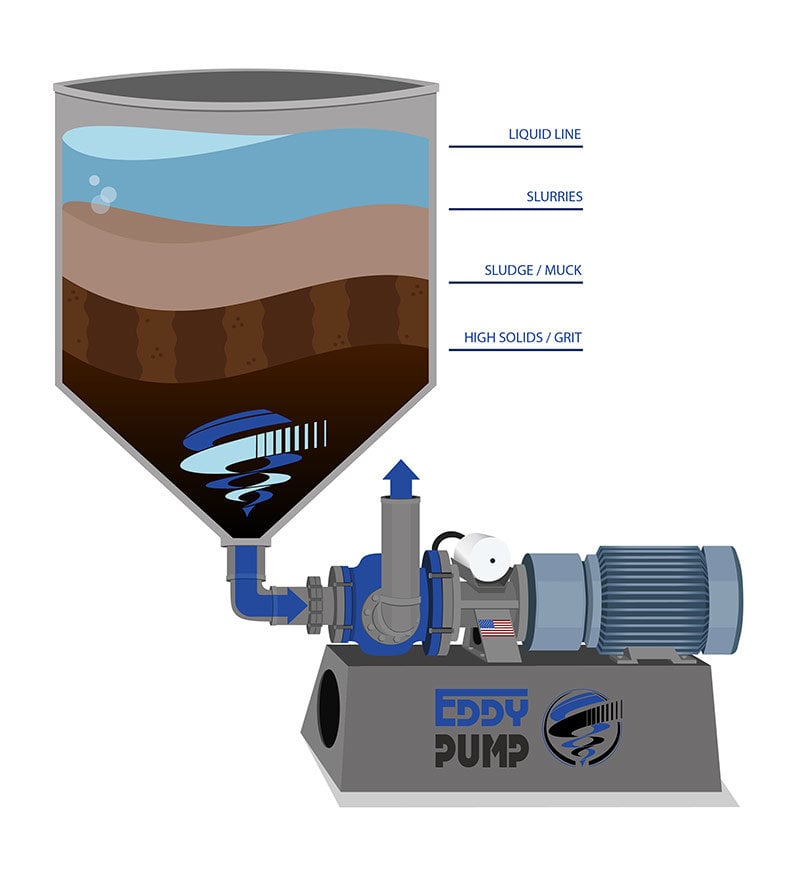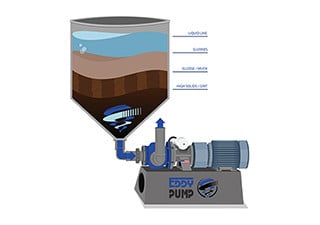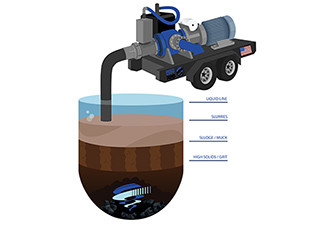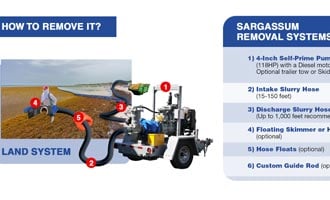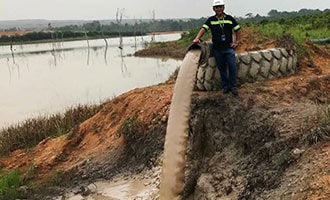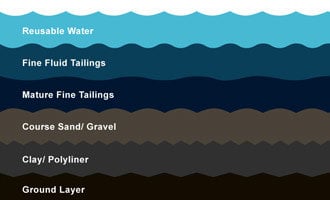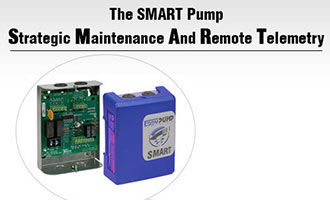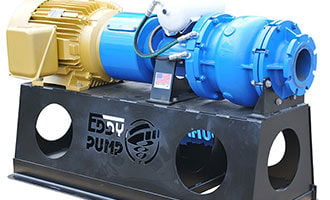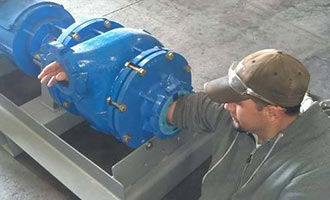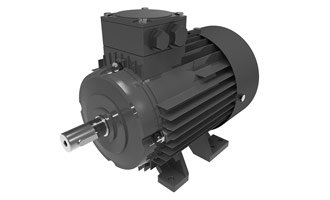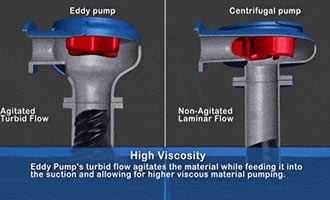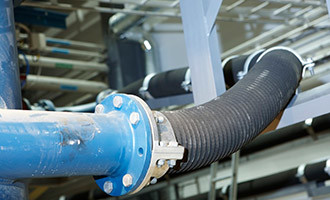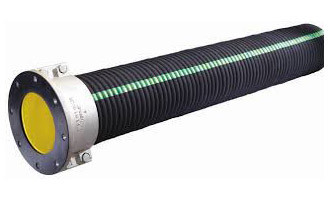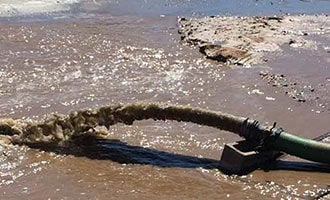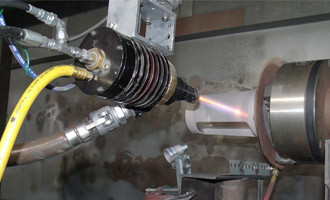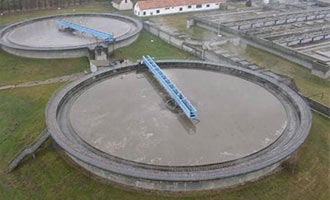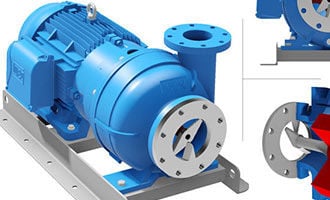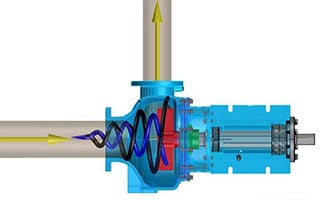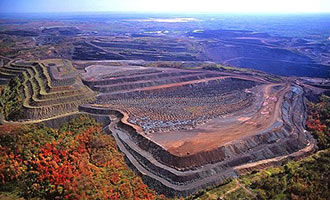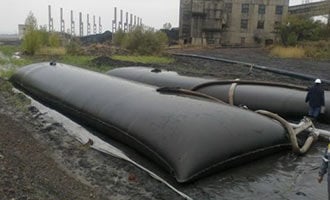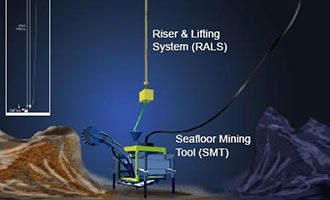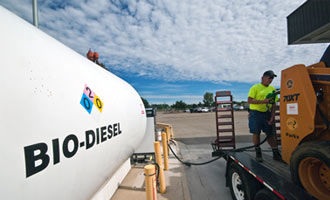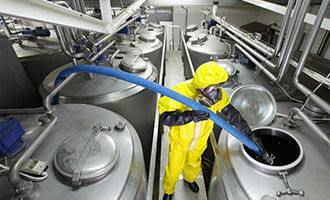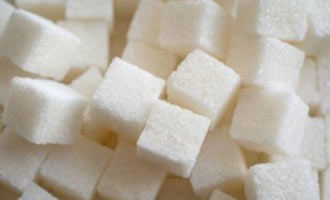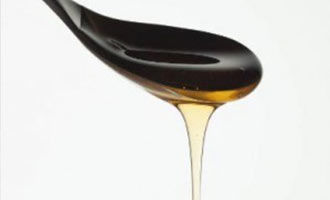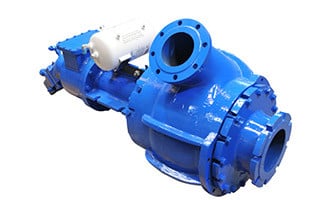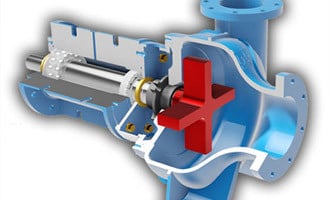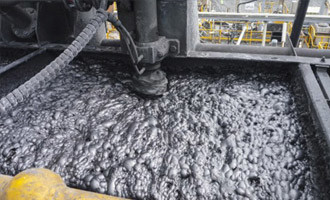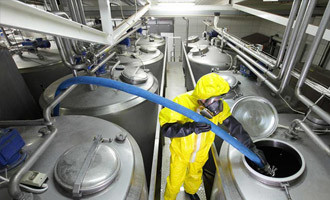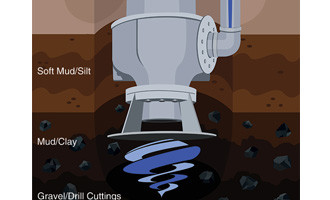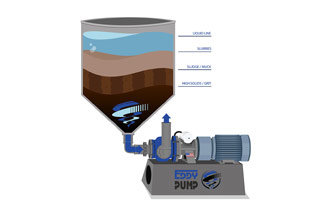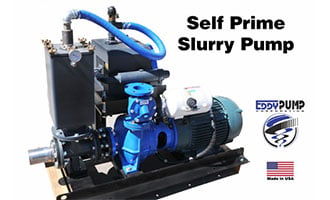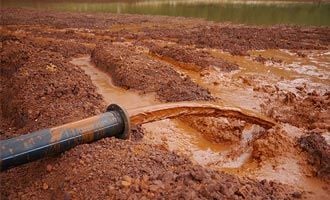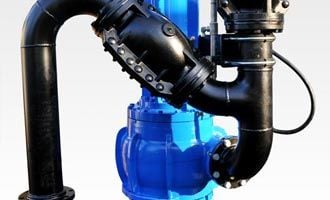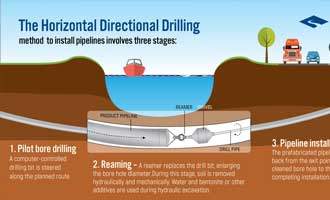What You Need to Know About Flooded Suction Pumps
Learn about the advantages and deployment options for flooded suction pumps in addition to how they are different to submersible pumps. Browse Our Slurry PumpsContact Us For a Fast QuoteThis article includes:
- A Common Types of Flooded Suction Applications
- What is a Flooded Suction Pump
- Advantages and Disadvantages of Flooded Suction Pumps
- Flooded Suction Pump Applications
A Common Type of Flooded Suction Deployment
Flooded suction pumps can be used in many different pump applications. They also have their advantages and disadvantages, which must be taken into consideration when making a slurry pump selection for your application.
Flooded suction pumps maintain a prime. When the pump’s operating mode is switched from off to on there is no delay in the fluid exiting the discharge port of the pump; fluid exiting the discharge happens immediately. Pumps that are not in a flooded suction application require an undetermined amount of time to prime the pump with fluid and then discharge the fluid through the discharge of the pump. Flooded suction pumps should always be fitted with a valve before the inlet of the pump so that the fluid coming from the flood suction source can be closed when the pump is not in use.
What is a Flooded Suction Pump?
A flooded suction pump is designed to work by being gravity-fed the fluid that is to be pumped. This type of pump does not require a method of priming the fluid. There are numerous types of flooded suction pumps. A flood suction pump application is unlike a submersible pump application. In a flooded suction pump application, the pump and the pump motor are located outside of the fluid to be pumped. Whereas, in a submersible pump application the pump and the pump motor are located inside of the fluid that is to be pumped. In flooded suction pump applications it is common that electrically driven pumps with a variable frequency drive (VFD) or soft-start are used. A VFD makes sure that the pump startup is monitored correctly and can also monitor the speed or rpm of the pump in order to control the flow and pressure of the pump. A less common power source for a flooded suction pump is a direct drive diesel-driven pump. This can be found in outside hopper pump applications for sand and gravel pumping, mining, drilling mud pumping, etc.
It is important to make sure the material that will be pumped is not too thick or viscous, otherwise, it may have a hard time correctly feeding to the pump, resulting in air pockets. The fluid needs to be constantly feeding the pump to prevent damage to the pump and equipment. If the material is too thick, a vacuum pump or self-priming slurry pump may be necessary to help the fluid flow into the pump to prevent too much air buildup.
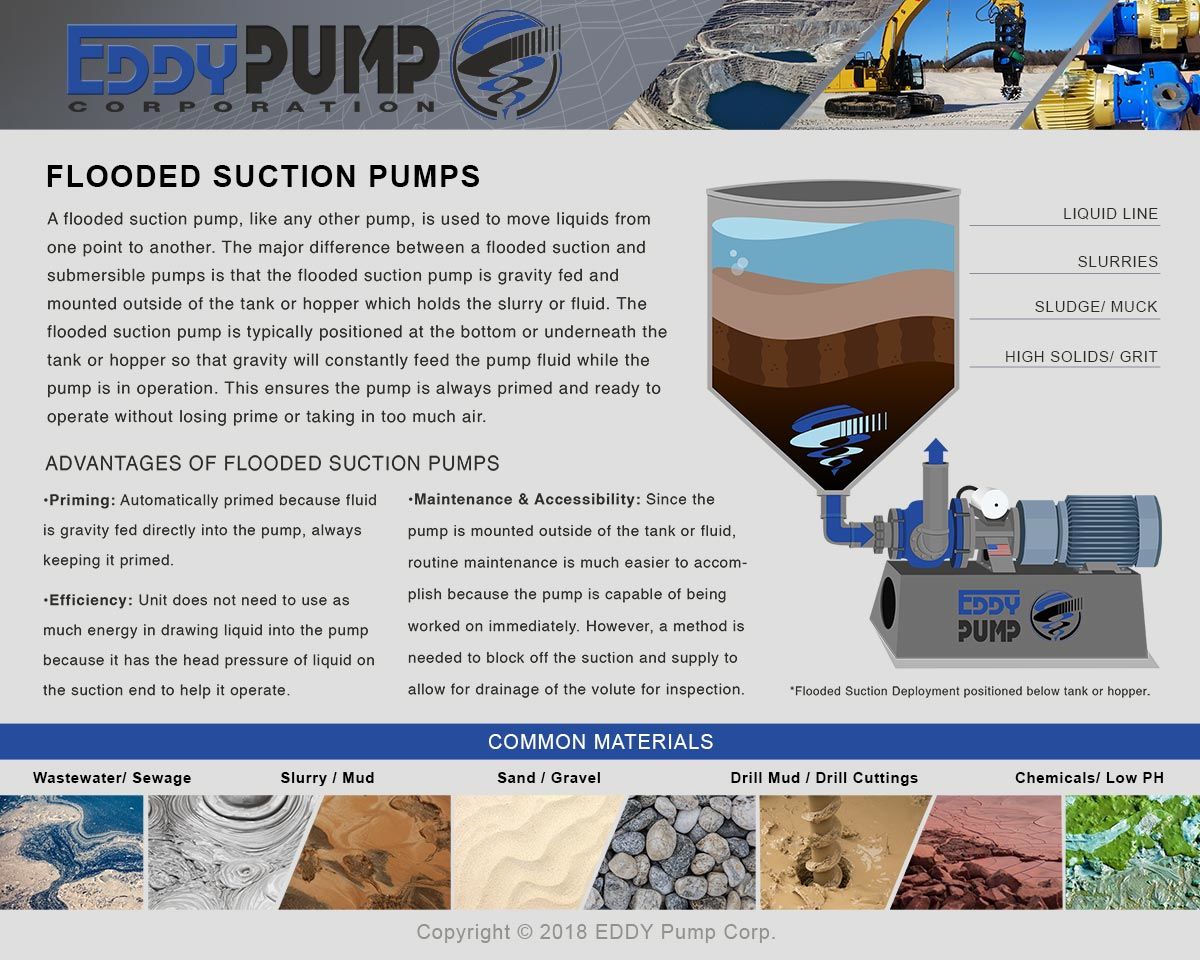
Advantages and Disadvantages of Flooded Suction Pumps
The flooded suction pump offers several major advantages over other types of pumps:
Priming: They don’t have to be primed. They are automatically primed because the fluid they will be pumping is gravity fed directly into the pump, always keeping it primed.
Efficiency: When a pump is submerged there is positive fluid pressure at the inlet of the pump. This condition can increase efficiency due to the less energy required to move fluid through the liquid path of the pump.
Maintenance & Accessibility: When the pump is located outside of the fluid being pumped, the pump can be easily accessible for routine maintenance. A shut-off valve should be positioned before the inlet of the pump which will allow the fluid to the pump to be shut off, then, the pump can be easily removed from the application.
There are also some disadvantages to contend with:
Potential to lose Prime: If the slurry mixture is too thick or viscous, it may not easily feed into the pump which can cause the pump to lose prime. Thus, the mixture needs maintain adequate fluidity to constantly feed the pump and prevent this from happening.
Corrosion: Prolonged exposure to a liquid of any sort will lead to corrosion. Submersible pumps are often used to handle liquids that are corrosive and abrasive. Seals are especially prone to corrosion, which leads to leaks and damage to the motor. To counteract corrosion these pumps need to be made of corrosion-resistant material, which can make them more expensive than other types of pumps of the same capacity.
Wherever possible, flooded suction pumps should be inspected as often as possible. In this way, any necessary repairs can then be carried out to prolong the life of the pump.
Flooded Suction Pump Applications
Flooded suction pump applications can be found in most industries. Anytime there is a need to locate a pump in a manner that the fluid to be pumped is positioned above the pump, and the pump is not located within the pumping fluid (submersible application), this would be considered a flooded suction application. EDDY pumps are ideal for flooded suction applications for pumping slurry, high solids, extremely viscous material, high abrasives (sand & gravel), and material filled with solids. For Access to the Complete EDDY Product Line Go to: https://eddypump.com/products/ Or Call Us!
EDDY Pump Deployment Options
Flooded Suction Pumps
With flooded suction pumps, the fluid to be pumped is positioned above the pump. With the pump positioned below, gravity can feed the fluid into the suction of the pump and keep the pump primed.
Submersible Pumps
Pumps that are completely submerged in the liquid are called submersible pumps. By being submerged in the fluid to be pumped, there is no need for priming.
Self-Priming Pumps
With a self-priming unit, the pump and power unit are not submerged. The suction hose goes into the slurry and the unit acts like a super-sized wet dry vacuum. Can be trailer mounted for added mobility.
Order or Get Selection Help
Let our sales or engineering support help in your grit pump and wastewater equipment selection. Call (619) 258-7020
Flooded Suction Pump FAQs
A flooded suction pump is a centrifugal pump where the suction inlet is submerged in the pumped fluid. It relies on gravity to maintain a constant fluid flow into the pump, ensuring efficient operation.
How does a flooded suction pump work?
A flooded suction pump works by utilizing the pressure difference between the fluid level in the suction source (such as a tank or reservoir) and the impeller inlet of the pump. This pressure difference causes fluid to flow into the pump through the suction line, which is then discharged at a higher pressure.
What are the advantages of flooded suction pumps?
Flooded suction pumps offer several advantages, including:
- Self-priming capability, as the pump is always filled with fluid
- Reduced risk of cavitation, leading to improved pump efficiency and reliability
- Simplified installation and operation due to the absence of priming requirements
- Suitable for applications where suction lift is impractical or not feasible.
What are the applications of flooded suction pumps?
Flooded suction pumps are commonly used in various industrial, commercial, and municipal applications, including:
- Water supply and distribution systems
- Irrigation and agricultural systems
- Fire protection systems
- HVAC (Heating, Ventilation, and Air Conditioning) systems
- Process industries include chemical processing, food and beverage, and wastewater treatment.
How do you size a flooded suction pump?
Sizing a flooded suction pump involves evaluating factors such as desired flow rate, total dynamic head (TDH), pipe diameter, fluid properties, and system operating conditions. Consulting with a pump manufacturer or engineer can help determine the appropriate pump size for a specific application.
What maintenance is required for flooded suction pumps?
Maintenance for flooded suction pumps typically includes regular inspection of components such as impellers, seals, bearings, and motor alignment. Additionally, monitoring fluid levels, checking for leaks, and ensuring proper lubrication are essential for optimal pump performance and longevity.
What are the limitations of flooded suction pumps?
While flooded suction pumps offer many advantages, they may only be suitable for some applications. Some limitations include:
- Requirement for a constant fluid source at the suction inlet
- Limited suitability for applications with high suction lift requirements
- Potential for flooding or overflow if not adequately controlled or monitored.
What is the difference between flooded suction pumps and self-priming pumps?
The main difference between flooded suction pumps and self-priming pumps is in their priming mechanisms. Flooded suction pumps rely on a submerged suction inlet for continuous fluid supply, while self-priming pumps incorporate a built-in mechanism to evacuate air from the suction line and prime the pump without external assistance.
What is a flood pump?
A flood pump, or a flood control pump, removes excess water from flooded areas. These pumps are designed to handle large volumes of water quickly and efficiently during flood events or water emergencies.
Which pump is used in flood control?
Flood control pumps, such as submersible or centrifugal pumps, are commonly used to manage floodwaters by pumping excess water away from affected areas and redirecting it to safer locations or drainage systems.
How do you use a flood pump?
To use a flood pump, place the pump in the flooded area, ensuring the suction inlet is fully submerged in water. Connect the pump to a power source and turn it on to start pumping water out of the flooded area. Monitor the pump’s operation and adjust until the desired water level is achieved.
How do you pump out flood water?
Pumping out floodwater involves using flood pumps to remove excess water from flooded areas. The pumps are placed in the flooded area, and water is pumped out through discharge hoses or pipes to a designated drainage point or location away from the affected area.
How do floodwater pumps work?
Floodwater pumps, such as centrifugal or submersible pumps, create suction to draw water into the pump’s housing. Then, impellers force the water out through a discharge outlet. The pump’s motor provides the necessary power to drive the impellers and pump water.
How do pumps prevent flooding?
Pumps help prevent flooding by removing excess water from flooded areas, thereby reducing water levels and mitigating the risk of property damage, infrastructure failure, and associated safety hazards.
What is the purpose of pumping water?
The purpose of pumping water is to transport, control, or remove water from one location to another for various purposes, including irrigation, drainage, flood control, water supply, wastewater management, and industrial processes.
How are pumps controlled?
Pumps can be controlled manually or automatically using control systems such as switches, timers, float switches, pressure sensors, or variable frequency drives (VFDs). These control mechanisms regulate pump operation based on specific parameters such as water level, pressure, or flow rate.
Which pump is commonly used for lifting water in water?
Submersible pumps are commonly used to lift water in water-related applications such as drainage, wastewater management, dewatering, and groundwater pumping. They are designed to operate while fully submerged in water.
Which pump is used for high flow?
Centrifugal pumps are often used for high-flow applications because they efficiently move large volumes of fluid. They are commonly used in flood control, irrigation, firefighting, and industrial processes requiring high flow rates.
Which type of pump is most commonly used?
Centrifugal pumps are among the most commonly used types due to their versatility, efficiency, and reliability. They are widely used in various industries and applications for pumping water, chemicals, slurries, and other fluids.
What are the three types of water pumps?
The three main types of water pumps are centrifugal pumps, positive displacement pumps, and submersible pumps. Each type has unique characteristics and is suitable for different applications, ranging from low-flow, high-pressure systems to high-flow, low-pressure systems.
Why EDDY Pumps Are Better - Highlights
This video shows how EDDY Pump transports high slurry and abrasive materials. Featured dredge pump equipment includes the Remote Operated Subdredge, Diver Operated Pump and a Excavator Attachment Dredge Pump.


